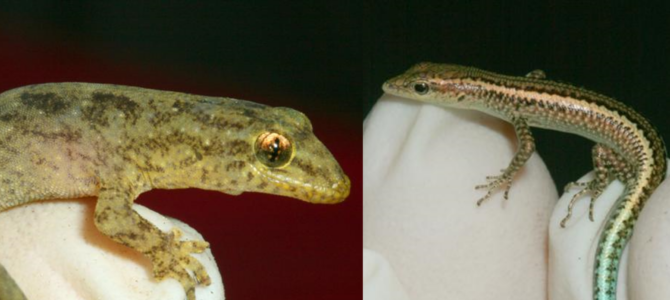by Tristan Dodge (Fullbright Scholar)
Now that you’ve been drawn in by my clickbait headline, allow me to introduce myself — my name is Tris and I’m visiting AWGG on a Fulbright Scholarship, which is an exchange program with the United States.
I’m an evolutionary biologist. Back home I’m a first-year PhD student at Stanford University, where I use genetic tools to understand ‘why do animals and plants look the way they do?’. There are actually two parts to this question:
- ‘what mutations in DNA sequences cause differences?’
- ‘why would such changes be beneficial and maintained over time?’
To answer these questions, my lab studies a group of freshwater fish species from Mexico called swordtails. My PhD research aims to understand why some fish have spots on their tail, some have spots on their bellies, and others have no spots at all. But while my PhD research will help us understand how evolution works in nature, it has little impact on the daily lives of species. For that reason, I wanted to do something that would contribute to help combatting the “biodiversity crisis”, a global issue where many species are threatened by extinction. The Fulbright scholarship’s mission of international collaboration fit nicely with this aim, so I jumped when the opportunity came.
So what’s the story with these lizards?
These lizards—the Christmas Island bluetailed skink and Lister’s gecko—have the unfortunate distinction of being the only two reptile species classified as extinct-in-the-wild. They’re both from Christmas Island, Australia, and almost went extinct in 2010 when invasive wolf snakes and giant centipedes ate all but 60 skinks and 40 geckos. These last few survivors were taken into captivity. Usually, when a species goes extinct in the wild, it tends to go permanently extinct shortly afterwards. But these reptiles have a fighting chance. Their numbers have increased over a decade of breeding to over 1000 individuals. And while Christmas Island is still unfriendly to lizards because the invasive snakes and centipedes are still around, hundreds of skinks have been released onto a neighboring predator-free island.
But what does fish spot evolution have to do with reptile conservation?
Evolution and conservation are tightly intertwined, and we can use similar genetic tools to gain insights into both processes.
Evolution has given rise to the biodiversity that we are now trying to conserve. Species are the way they are because their genes have evolved in response to a set of conditions, which humans are now rapidly changing, often too quickly for species to adapt in response.
Genetics can be a powerful tool for conservation. DNA sequencing is a process where we take an organism and break chromosomes from many of its cells into little pieces of DNA and read their bases (abbreviated as A,T,C, and G). This process has gotten much better over the last couple years: with today’s sequencing technologies, we can get millions of ‘reads’ back that are both very long (>10 thousand bases) and very accurate (fewer than 1 in 1000 bases are incorrect).
My job is to use a computer to put those pieces back together and ideally make a single string of DNA for each chromosome (these chromosomes be anywhere from tens to hundreds of millions of bases long!). Then by then looking at differences in the DNA that each reptiles got from their mom and dad, specifically, where in the genome these differences happen, we can learn a lot of cool things that are directly relevant to conservation. For example, we can use these patterns to estimate historical population sizes, figure out how inbred an individual is, and predict mutations that might cause disease. Because this skink is a male and skinks tend to have X and Y chromosomes, we can also use this genome to develop tests to see if baby skinks are male or female (before you can tell by just looking at them).
And what’s the point of it all?
By figuring all these things out, we can better manage captive populations of reptiles which will improve the species’ chances of survival. Importantly, figuring out how to save these extinct in the wild species holds lessons for other extinct in the wild species, which will likely increase as habitats continue to be degraded and invasive species continue to spread. Armed with insights gained from genetic tools, I hope we can reverse this extinction trend.
Author

Tristan Dodge | Fullbright Scholar
